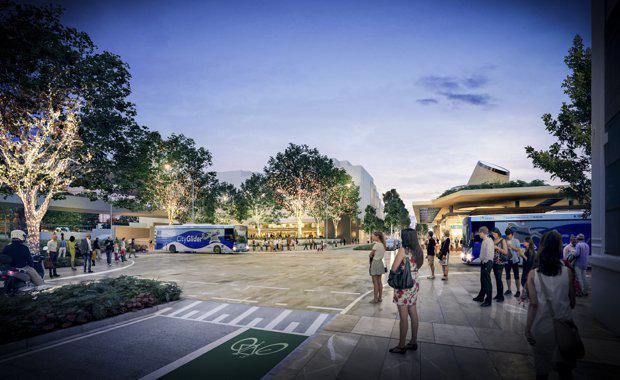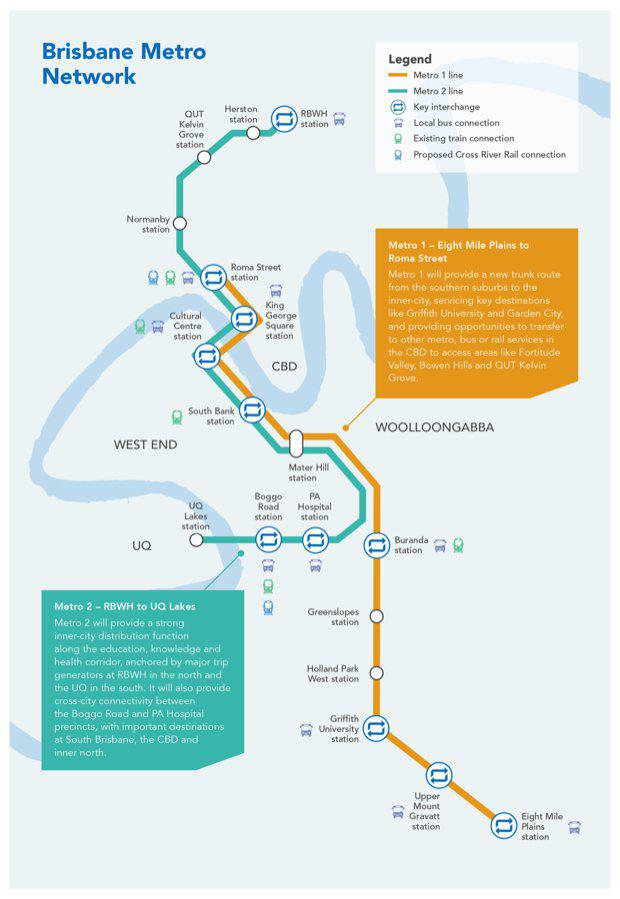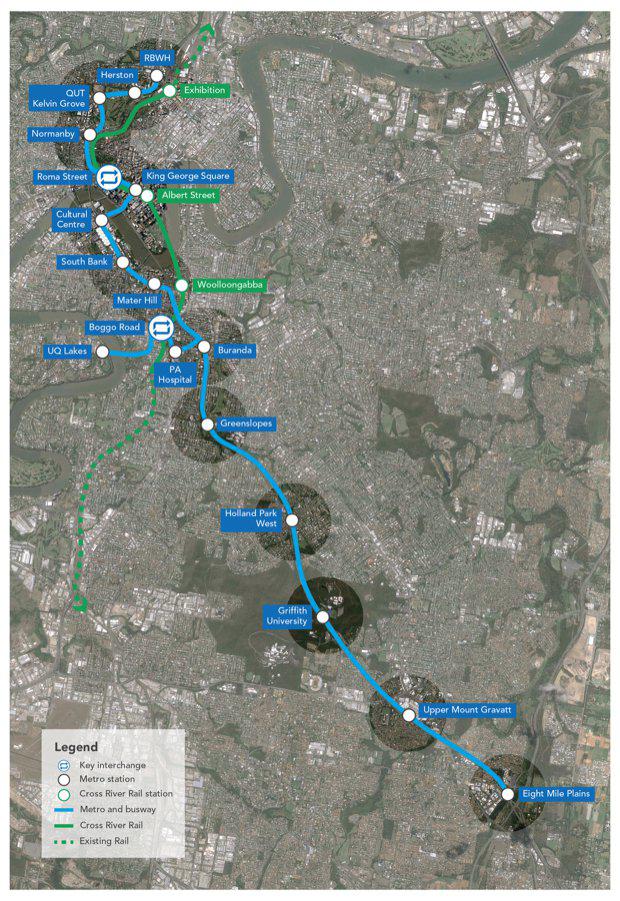Lord Mayor's Business Case Confirms Brisbane Metro Viable
Lord Mayor Graham Quirk has released the business case into the Brisbane Metro that confirms the viability of the project at a cost of $944 million.
Cr Quirk said the business case determined the project had a benefit cost ratio of 1.91 - which delivers an economic benefit of $1.91 for every $1 of expenditure - and was a vitally needed investment to the city’s transport network and economic prosperity into the future.
“The Brisbane Metro business case confirms the project is a feasible, value for money investment that will provide significant benefits for both Brisbane and the region,” he said.
“Right now, buses carry two of every three public transport patrons in Brisbane. Our existing bus infrastructure is already at capacity in a number of areas and cannot cope with the continued forecast growth of our city.
“Importantly the Brisbane Metro will improve our lifestyle and leisure opportunities by providing an average of a one hour weekly travel time saving for metro commuters.
“Brisbane Metro is the right transport solution for Brisbane and now is the time to deliver it.”

Cr Quirk said the project would connect and complement major projects such as the $3 billion Queen’s Wharf Brisbane development, the $1.1 billion Herston Quarter redevelopment and the proposed BrisbaneLive at Roma Street.
“The Brisbane Metro will demonstrate our credentials as a vibrant 24 hour, New World City with services operating around the clock on weekends,” he said.
“Each metro vehicle will have free Wi-Fi internet, so passengers can stay connected while travelling along the metro lines.
“Brisbane is a New World City and by 2022 we will have major projects such as Queen’s Wharf Brisbane operating and Brisbane Metro will play a major role in providing high-frequency, high-capacity services and redirecting more buses into the suburbs.
“The Brisbane Metro corridor links key employment areas with a high frequency passenger transport system to support business and enable these locations to thrive.

“Brisbane Metro will be part of a long term plan for a broader metro network as extensions are made to the State Government’s busway network and will be integrated with the proposed Cross River Rail project and other existing rail.”
On a conservative basis, the cost benefit analysis results show a benefit cost ratio of 1.91 – for every $1 of total expenditure, Brisbane Metro is expected to return $1.91 of benefits to the economy.
A significant portion of these benefits are delivered to public transport users, reflecting reductions in waiting and travel times due to the high frequency services and upgrades at each of the 18 busway stations to enable commuters to swipe on and off at the busway stations to ensure faster journey times.
Cr Quirk said development of the business case had been extremely thorough and robust, highlighted by the expansion from one dedicated line to two while being costed at about $550 million below the first forecasts.
The high-frequency, high-capacity Brisbane Metro will run across 21 kilometres of existing busway infrastructure and slash travel times by an estimated 30 per cent in the morning peak and 50 per cent in the afternoon peak.

There will be two Brisbane Metro lines to carry services every three minutes in peak periods on weekdays, every five minutes on weekdays between the peak and every ten minutes at other times.
Cr Quirk said a new state-of-the-art underground Metro station would be built at the Cultural Centre and Victoria Bridge will be converted to a ‘green bridge’ for Metro and bus services.
“Improving the pedestrian environment and public realm at Melbourne Street and Grey Street will help establish a gateway to the world-class cultural precinct,” he said.
Cr Quirk said the business case would be submitted to Infrastructure Australia and the State Government with further detailed engagement with key stakeholders to further the development of the project.
Key facts
Two high capacity, high frequency BrisbaneMetro lines covering 21 kilometres.
Upgrades to 17 existing stations, with interchange opportunities at 11 locations, including 2 Cross River Rail interchanges.
A new state-of-the-art underground metro station at Cultural Centre.
Converts Victoria Bridge to a ‘green bridge’ for metro and bus services.
About 60 metro vehicles with the capacity to carry up to 150 passengers.
Boosts capacity of the SE Busway up to 22,000 people per hour in the morning peak.
Capital cost of $944 million and construction expected to be completed at the end of 2022.
Redirects buses to provide more services to the suburbs.














